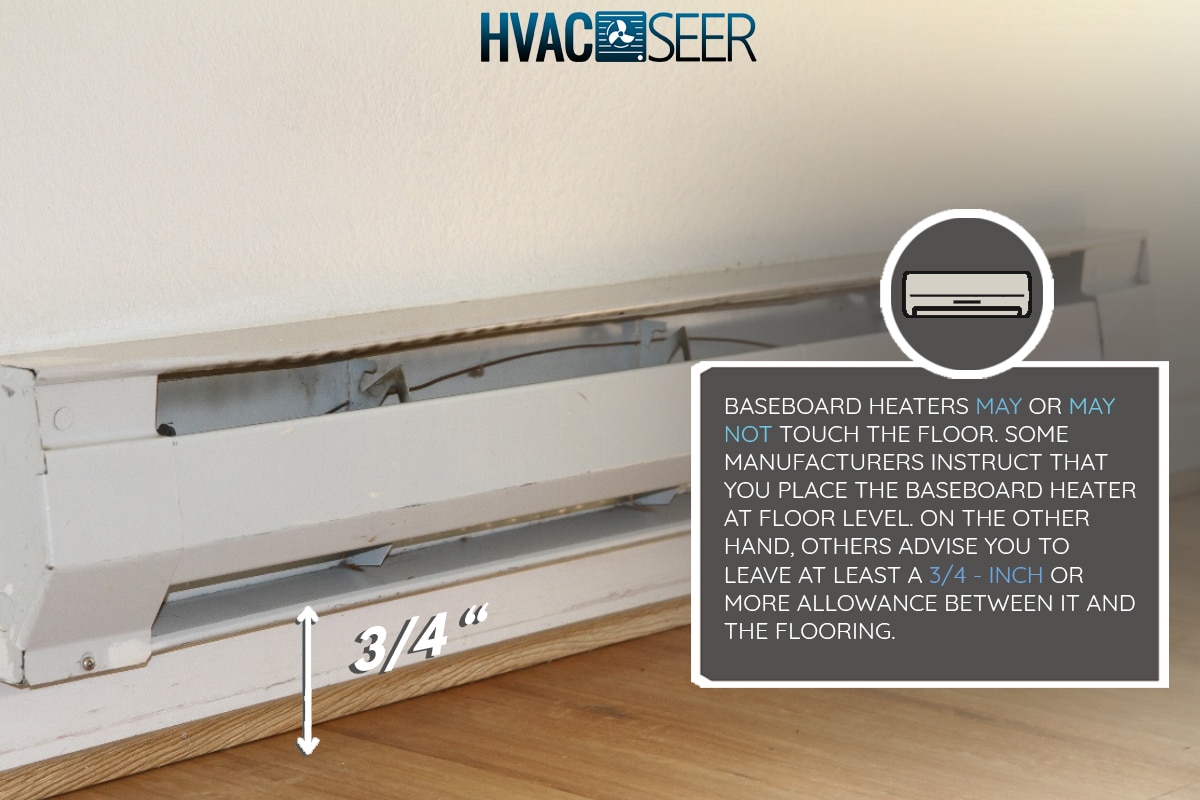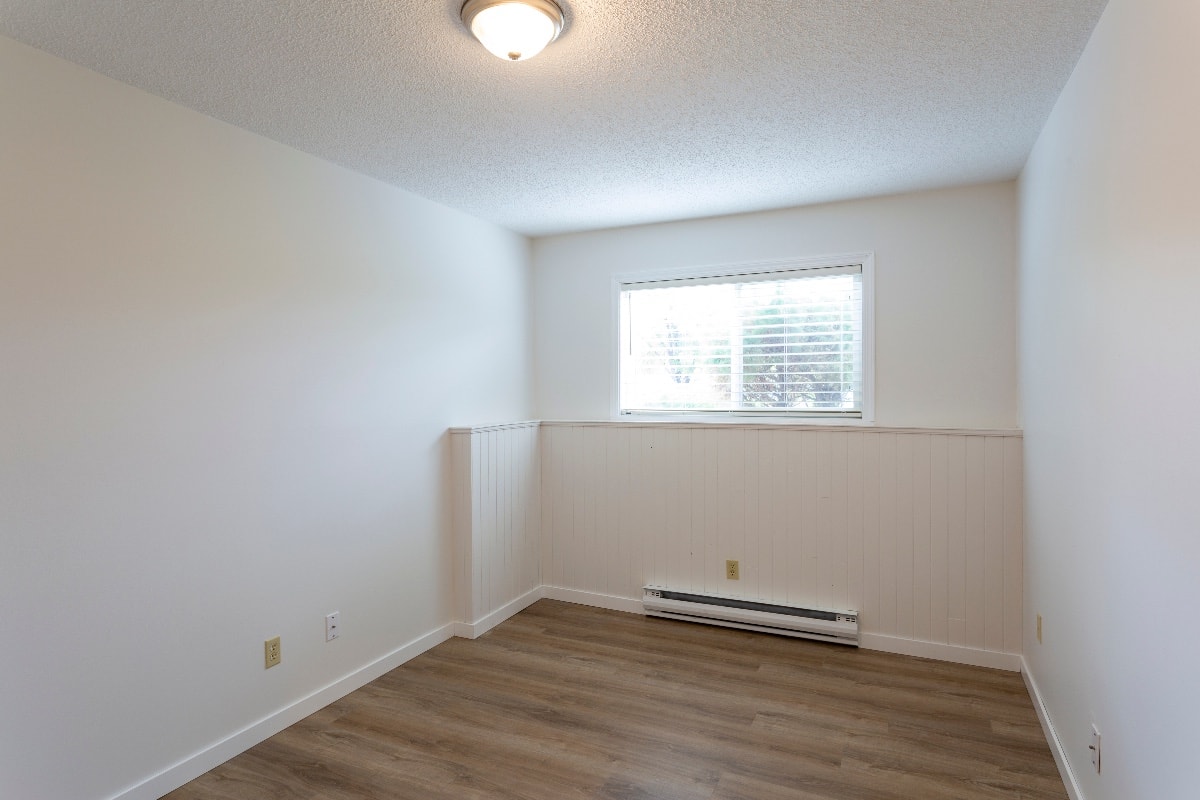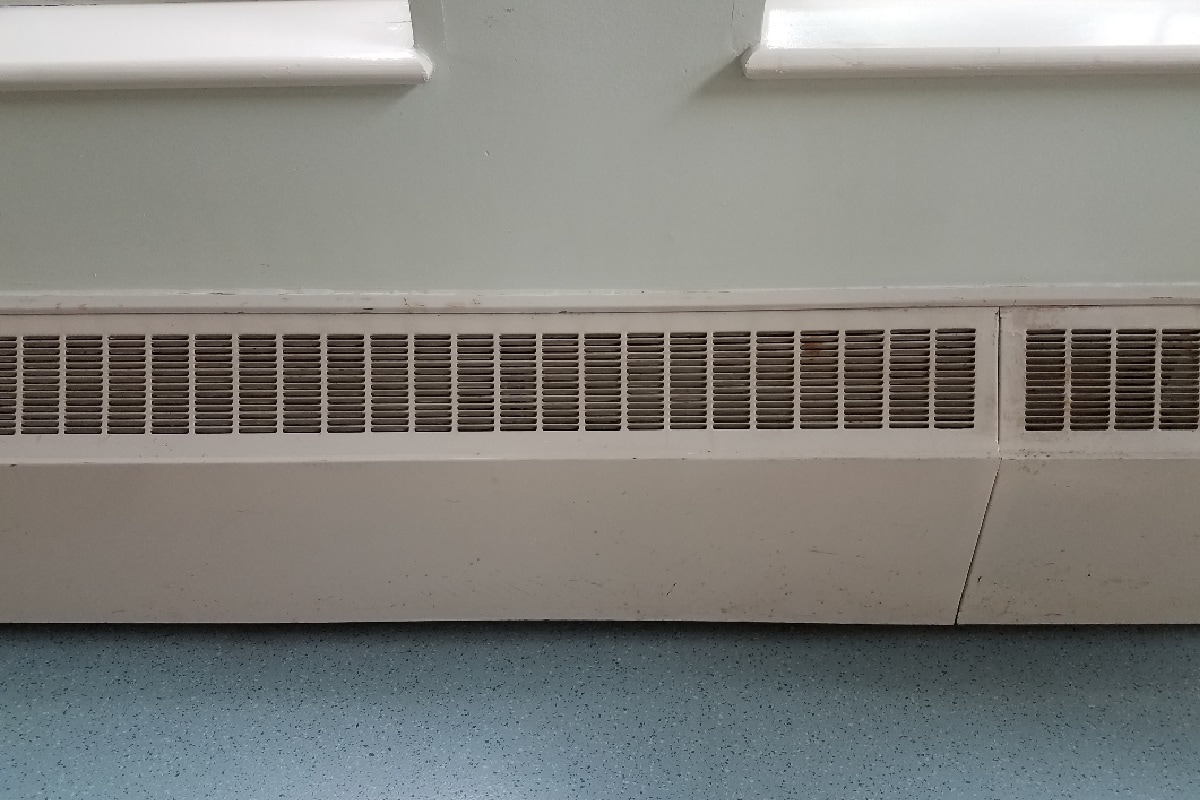Baseboard heaters are a great addition to keep everyone in your home warm during the winter. If you plan to install it, you may wonder if it should touch the floor. We have researched this topic for you. Here is what we found out:
Baseboard heaters may or may not touch the floor. Some manufacturers instruct that you place the baseboard heater at floor level. On the other hand, others advise you to leave at least a 3/4-inch or more allowance between it and the flooring.
Now that you know whether a baseboard heater should touch the floor or not, we will further explain the reason behind it. We will also answer other important related questions you may have. Make sure to read until the end of this article to learn them all. Let's start!

Why Baseboard Heaters Can Or Cannot Touch The Floor
Evaluate each baseboard heater individually to determine if it should contact the floor or not. But if you are unsure how to proceed, consult the manufacturer or read the instructions on the owner's manual.
Case For Touching The Floor

Some baseboard heaters, such as electrical heaters, can touch the floor because their design lets them do that. Placing these heaters on the floor doesn't bar airflow.
Case Against Touching The Floor

Leaving at least 3/4 inch or more of allowance from the floor enhances efficiency. The space allows cold air to enter through the bottom of the heater. The heater then uses electricity to warm the cold air and releases it through the opening at its top.
Additionally, the higher and closer the heater is to the cold air's source, like the window, the more effective it will be in warming this air.
One disadvantage of some baseboard heaters is that they create potential fire hazards. The risk arises because the heater gets hot as you use it to warm your home. So anything flammable near it may start a fire. The gap keeps the appliance's heat from reaching or contacting flammable floorings.
Research assessing the fire safety of flooring materials shows that natural wood-based materials have superior fire resistance, while carpets made of nylon or polyamide do not. See the list below to get an overview of their test results.
- Board floor - moderate flammability
- OSB (oriented strand board) board - moderate flammability
- Beech parquet - combustible with difficulty
- Linoleum - moderate flammability
- Laminate flooring - moderate flammability
- PVC - moderate flammability
- Polyamid carpet - high flammability
Aside from that, carpets are reported to aid in spreading flames during a fire. These concerns resulted in the federal regulations that require carpets sold in the U.S. to pass 'The Pill Test.'
Benefits Of Baseboard Heater
A baseboard heater is not all about the threats it poses. It also has its pros as a heat-generating device. Take a look at the advantages that it provides.
- It operates quietly.
- It has a digital thermostat that turns it off automatically once the room reaches the desired temperature.
- It disperses clean heat.
- It can save you money.
- It is energy-efficient.
How Close Can You Put Things To A Baseboard Heater?

It would be best if you allotted a 12-inch (1-foot) gap between the baseboard heater's front part and any material like a bed or couch. Also, measure at least 6 inches of space on each side if you plan to decorate it with furniture.
When it comes to curtains, the bottom hem must also be a foot away from the device's top surface, where the warm air is being released.
Are you wondering how hot baseboard heaters can get? Learn here: How Hot Do Baseboard Heaters Get?
Where Is The Best Place To Put A Baseboard Heater In A Room?

The ideal place to install a baseboard heater is under the windows, since it is one of the main openings through which cold air enters your home.
Having a heating device underneath that spot may help warm the air before it gets further into the room. Think of it as a temperature-canceling tool or a guard that ensures you receive little or none of the cold breeze that enters your house.
Aside from this, here are some things you can consider when deciding where to put your baseboard heater.
- There should be no electrical outlet above the baseboard heater.
- Doors or furniture should not block the heater.
How Do You Arrange A Room With Baseboard Heat?
To arrange or decorate a room with a baseboard heater, consider the space clearance we discussed earlier in this article—the 1-foot/6 inches rule. To give you a more detailed example, see the furniture arrangement below.
Look closely at how the baseboard heater is located under the window and is inches away from the wooden bar. Also, the device's design requires it to be a few inches above the floor.
In this example, the flooring may be either a ceramic or a porcelain tile, which is a fire-resistant material, so it may not be dangerous even if the heating device here touches the floor. But still, the advised clearance is observed with the things near it.
Are Baseboard Heaters Safe For Babies?
Since a baseboard heater can get hot to touch and its fins can cut the babies' delicate fingers, it can be dangerous. But there are ways to make your space warmer while keeping babies safe.
- Purchase a cover to conceal the fins.
- Conceal the heater's presence so they won't bump into it easily.
- Teach or remind them not to go near the device as it may hurt them upon doing so.
- Invest in playpens so they won't be crawling around the house.
How Much Does It Cost To Install Baseboard Heating?
The installation of baseboard heaters can cost from $379 to $1,1213. The cost will depend on factors such as the heater model, the number of units to be installed, and the area of the space.
To give you an overview, here are some of the installation prices depending on the room size.
- 64 square feet - $40 to $150
- 80 square feet - $50 to $150
- 100 square feet - $75 to $250
- 150 square feet - $100 to $300
- 300 square feet - $150 to $700
- 400 square feet - $275 to $800
- 500 square feet - $300 to $1,000
If you want a baseboard cover installed too, you will pay an additional $50 to $170.
Can Baseboard Heaters Cause A Fire?
Baseboard heaters can cause a fire if used inattentively and carelessly. Although they are a great way to make it through the winter, heaters are one of the main causes of fire during cold weather.
There have been incidents reported about this, and according to Consumer Product Safety Commission, there are 21,800 heater-related fires yearly. Consequently, fire departments release a lot of tips and safety measures to the public to prevent this from happening.
How To Prevent Fire From Heaters
Here are some preventive measures to prevent baseboard heater-related fires.
- Avoid blocking the airflow by keeping it off the floor or carpet.
- Do not put any furniture or material within the device's three-foot radius.
- Have it repaired or replaced once you notice that it is malfunctioning.
- Regularly clean the baseboard heater to remove dirt, dust, or hair strands.
Planning to update your baseboard heater? Learn how to do that here: How To Update Baseboard Heaters
How To Clean Baseboard Heater
Since one of the essential baseboard heater maintenance practices is cleaning it regularly, here is a step-by-step guide on how to do it.
- Step 1 - Lower the temperature on its thermostat.
- Step 2 - Remove the baseboard heater's covers by carefully lifting and pulling them up in your direction. Set them aside in a dry, clean space.
- Step 3 - Using a handheld vacuum with a brush nozzle, remove the dust and debris along the fins. Do this thoroughly.
- Step 4 - Re-align any deformed fin you can find using long nose pliers.
- Step 5 - Get the covers you set aside and re-install them back on the device.
To give you a more detailed demonstration, check out this video:
Conclusion
Depending on its design, a baseboard heater can either touch the floor or not. It is best to check your manufacturer's installation instructions regarding this. Generally, it is recommended that you allot space between the two since these heaters are a fire risk.
To enhance your safety, observe precautions such as eliminating everything that may block airflow, replacing or repairing it as soon as you notice any malfunction, and vacuuming the device regularly.
The clearance scope of this heating device is 12 inches in front and 6 inches on each side. Consider this when you start designing or decorating the area around it.
